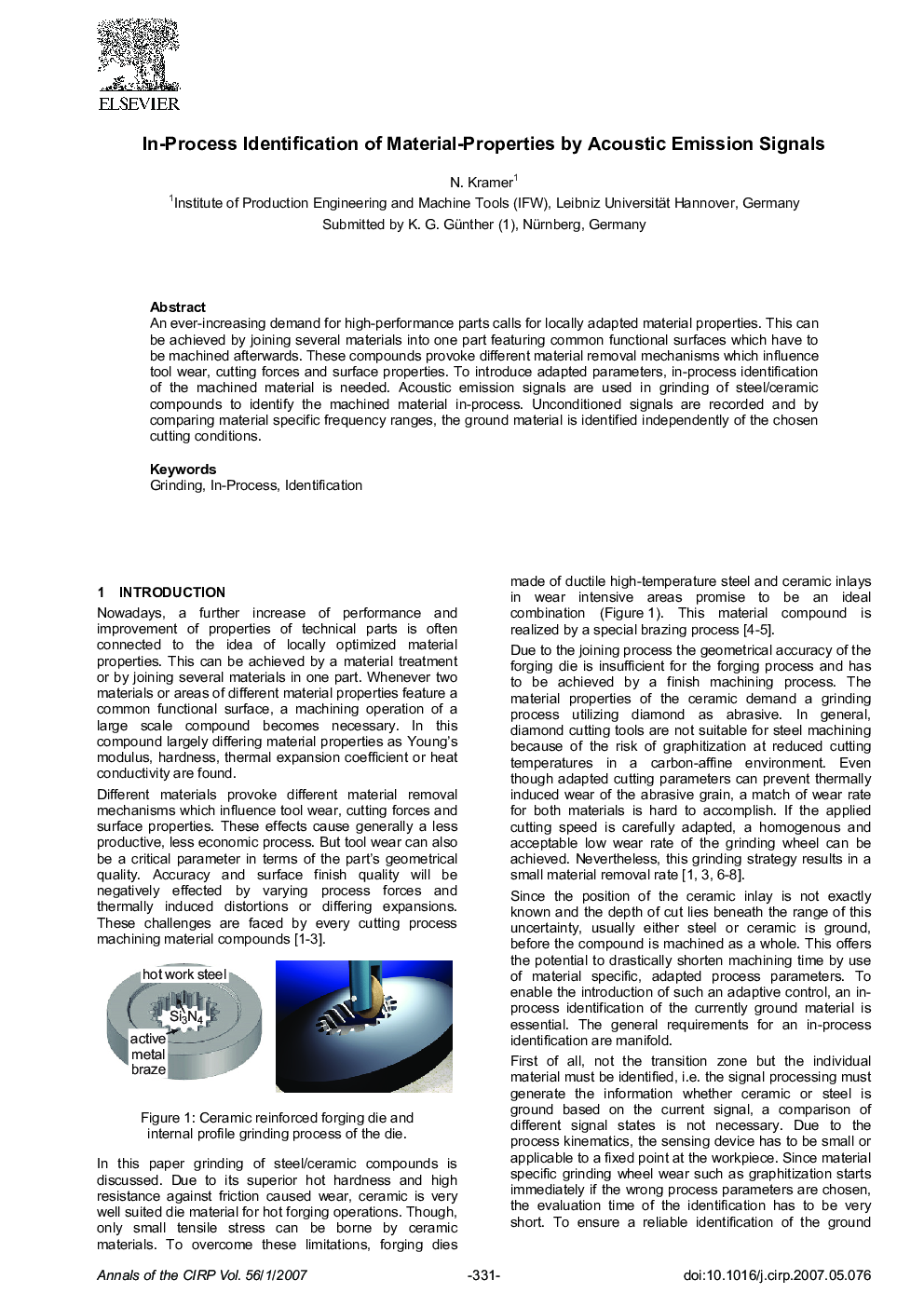| Article ID | Journal | Published Year | Pages | File Type |
|---|---|---|---|---|
| 10674631 | CIRP Annals - Manufacturing Technology | 2007 | 4 Pages |
Abstract
An ever-increasing demand for high-performance parts calls for locally adapted material properties. This can be achieved by joining several materials into one part featuring common functional surfaces which have to be machined afterwards. These compounds provoke different material removal mechanisms which influence tool wear, cutting forces and surface properties. To introduce adapted parameters, in-process identification of the machined material is needed. Acoustic emission signals are used in grinding of steel/ceramic compounds to identify the machined material in-process. Unconditioned signals are recorded and by comparing material specific frequency ranges, the ground material is identified independently of the chosen cutting conditions.
Keywords
Related Topics
Physical Sciences and Engineering
Engineering
Industrial and Manufacturing Engineering
Authors
N. Kramer,
